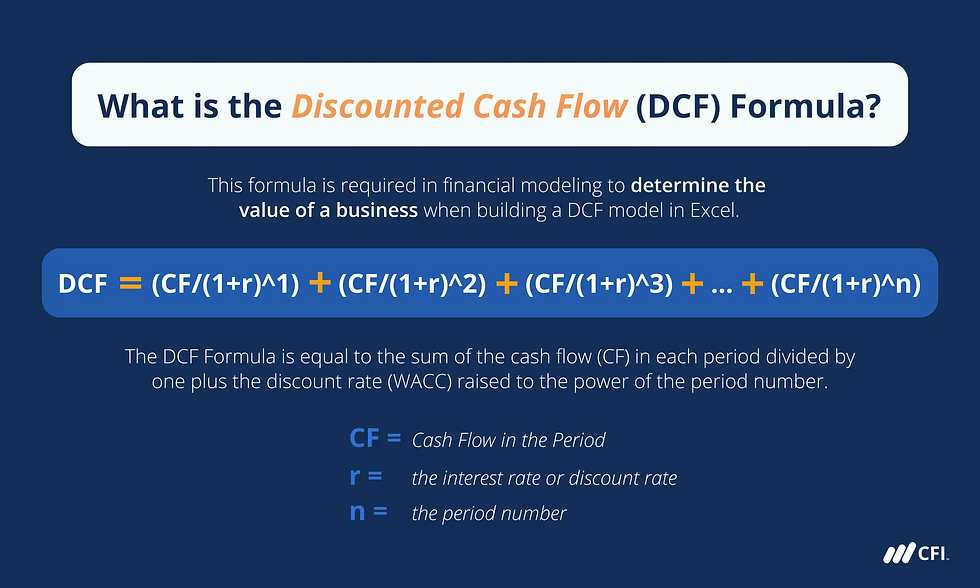Sales Forecasting (21.3)
- Thiago Casarin Lucenti
- Sep 30
- 3 min read
Chapter 21 - Marketing Analysis
Lesson Objective: To understand the importance and methods of sales forecasting
Sales Forecast is the process of trying to predict sales levels and trends and it's important for businesses because:

The production department would know how much to produce, and order (capacity);
The marketing department uses it for planning distribution and pricing;
The HR department uses this information for a more accurate workforce planning;
The finance department could forecast cash-flow with much higher accuracy.
Therefore, sales forecasts are there to reduce the risks of an operation.
However, a precise sales forecast is very difficult to achieve due to:
Ongoing changes in customers’ tastes;
Dynamic industry developments (technology, competition);
Ever-changing economic climate (e.g. income);
Promotional impacts.
Although difficult, companies still do sales forecast to minimize the occurrence of unforeseen changes.
There are many techniques to forecast sales - qualitative and quantitative methods.
Some of the most common quantitative methods fall under the time series analysis category, in other words: are based on past sales data:
Time Series Analysis - Method 1: Extrapolation: basing future predictions on past results:

It assumes that sales patterns are stable and will remain stable in the future;
It is ineffective when future patterns change;
Extrapolations far in the future are less likely to be accurate.
Time Series Analysis - Method 2: Moving Averages: it considers trends, seasonal fluctuations, cyclical fluctuations, and random fluctuations in demand - more complex, more accurate:

Each total in column 4 is made of four quarters added together (a.k.a. four-quarter moving total);
A four-quarter moving total is used because the sales over this period of time is likely vary consistently (e.g. ice cream sales are high in the summer months and low in winter months);
Two four-quarter moving totals are then added together for the eight-quarter moving total (column 5);
The eight-quarter moving total is then divided by 8 to find the quarterly moving average (column 6) - this average is considered the trend of the data;
Next, we ought to find the seasonal variation, the difference of the actual sales (column 3) and the trend (column 6). In other words, the seasonal variation = sales revenue - trend;
Results can be both, positive or negative, the later one meaning that sales in that quarter are usually below the trend (or average) for seasonal reasons;
Finally, the average seasonal variation (ASV) is calculated by adding all the seasonal variations for each individual quarter and then dividing by the number of results.
FAQ: Why does the TREND value start from Q3? Because it is the mean value among the five quarters used to getting to that result.
The results from the moving average table can be used to forecast sales by:

Plotting the moving averages (trend) in a graph - by quarters;
Extrapolate them into the future;
Read off the result from the graph;
Adjust the number by the average seasonal variation of that quarter.
$208,000 + (- $4,600) = $203,400
Evaluation of the moving average method:
- Somewhat accurate for short-term forecasts where economic conditions are stable;
- It assists planning for each quarter differently;
- Can be unreliable when applied further into the future;
- Qualitative factors are left out making it less reliable than it could be.
Activity 21.8
We will now dive in to qualitative methods of sales forecast:

Sales-Force Composite:
Gathering insights from sales people (B2B) about the feel and expectations of their retail/wholesale customers on the future sales and then adding those estimates together.
Although easy, cheap, and quick, it can be very inaccurate as it doesn't consider macroeconomic and external developments
Delphi Method:

Consumer Surveys:
Carried on by internal or external researchers to understand customers' future purchase behavior. Data can either be qualitative or quantitative.

Jury of Experts:
When senior managers within the business make a forecast by working together on statistical models and based on experience. Cheaper and quicker than Delphi Method since it's internal but may lack external view of the market conditions.
The main purpose of sales forecasting is enabling better decision-making - all departmental decisions can be improved with forecasts. Decisions regarding:
Marketing: price, promotion, channels of distribution, expansion strategies (markets with more promising forecasts);
Operations: capacity utilization, rationalization, inventory levels, operations flexibility;
Finance: financing decisions based on cash-flow (short or long-term), reduction of outflows;
Human Resources: employment contracts (flexible, permanent), redundancies, recruiting - workforce planning.
Although forecasts should not be the sole basis of a decision they do indicate sharp increases and declines giving managers an idea of what actions to take.
To-Do-List:
Decision-Making Question #2 (GlaxoSmithKline (GSK) – One of The World’s Big Researchers)
Chapter 21 - Marketing Analysis



Comments